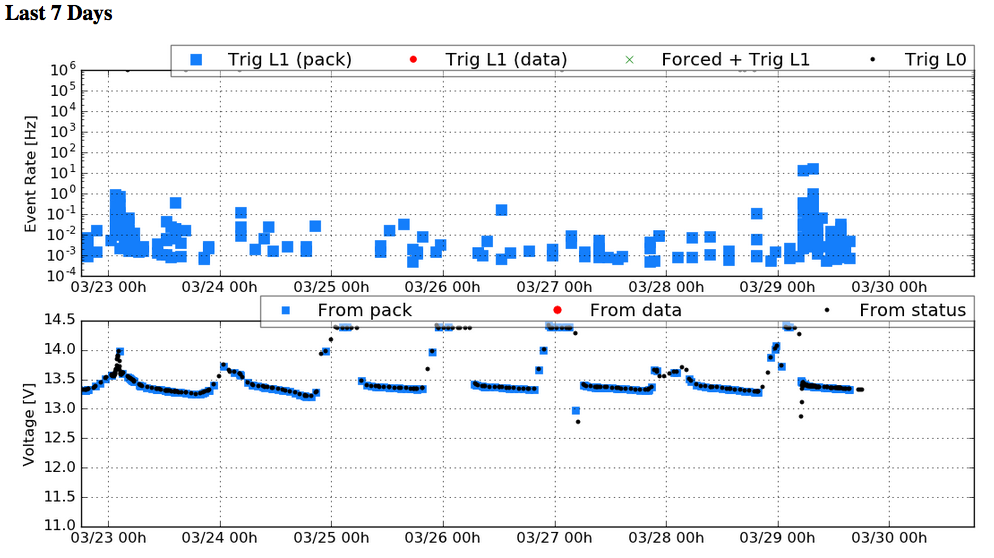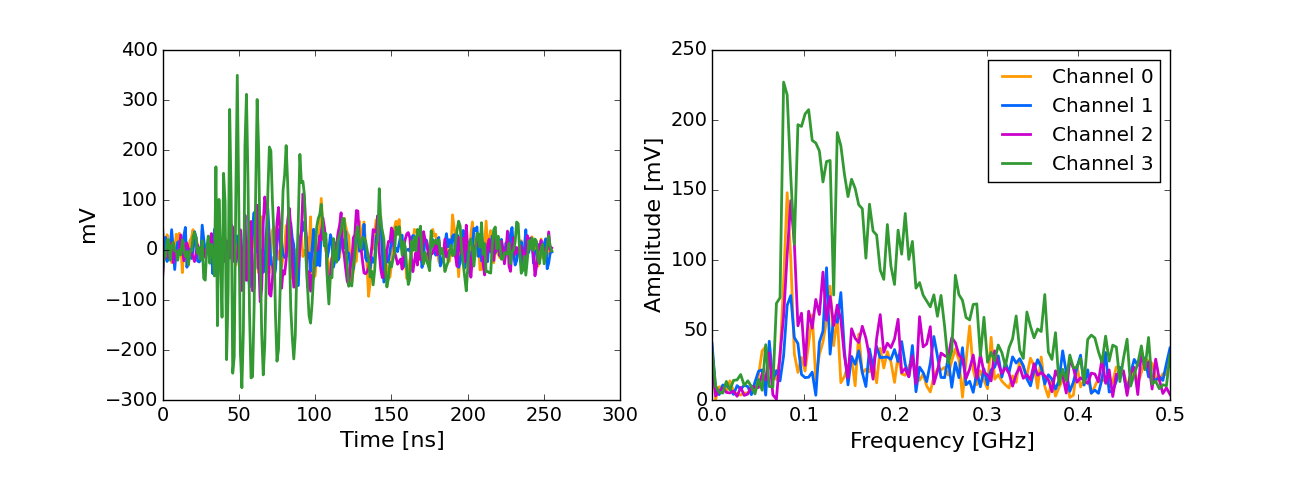
Back in sunny California, the days are getting longer and the amount of sun warming us during lunch break is increasing every day. While the amounts of sunscreen applied here will soon reach the amounts needed in Antarctica, our stations are getting ready for a long period of sleep. Mid April the sun will set on the Ross Ice-shelf to not rise again until September. Since solar power is currently our only power source, the stations will hibernate until they get woken up again in Antarctic spring.
So, how have the stations been doing since we left them in December. Actually the exceeded expectations. The newly installed batteries are reliable and the noise level extremely low. Care to take a look:

A little bit of explaining: Our trigger is set at about 3 times the thermal noise level. Just by fluctuations of this thermal noise you expect trigger rates of around 0.001 or 0.01 Hz (This means one trigger every 100 - 1000 seconds). And that is exactly what we see. Only when start messing with our settings, like we did between the 29th and 30th of March, the rates change. So the good news are: Our noise seems to be almost exclusively thermal. In turn this means that a neutrino or cosmic ray signal will show reveal itself without too much additional effort.
The other plot shows you our power situation. Whenever the solar panels are providing enough power the Voltage goes up to 14.5 Volts. So, you see two things: The sun is only up for a couple of hours now in Antarctica, and the weather is getting worse. Cloud coverage prevents the sun from shining on our solar panels are therefore, we do not reach 14.5 Volts during all days. When the sun is down, our batteries take over. Since the station only needs 12 Volts to operate, everything above is luxury.
Of course, we have also been browsing through some data that is constantly coming in. In fact, almost 90% of our data taken in Antarctica makes it to California almost in real time. At very low trigger rates, we can send every single event with SBD (which is just a fancy name for a binary text-message via satellite.) So, some that come through look exactly like the signals our simulations have predicted from air showers.

The cosmic ray signal is polarized and comes from above. So you see it only strongly in one of the upward facing antennas (channel 3) while the two downward facing antennas (Channel 0 and 1), as well al the other upward facing antennas are suppressed. The pulse also shows ringing with a chirp of high frequencies that arrive first, a clear smoking gun for a signal from a particle shower. Furthermore, the frequency spectrum (on the right side) shows a broadband contribution with a characteristically decreasing slope. If you want to know more, you will have to stay tuned for our upcoming scientific publications, which we will start to compile once data taking has stopped for this season.
Since our stations are so happy in the field right now, our colleagues in Sweden have started to look into installing wind generators to keep running through the winter. The first ARIANNA stations did have wind generators, but it turned out that the weather in Antarctica is more violent than anyone had anticipated. The windgenerators burst to pieces. Also, the electronic switches in the generators created nice pulses -- however, the ones we did not want to record. But since more and more groups would like to utilize reliable windpower in the Arctic and Antarctic regions, the manufacturers have started to provide solutions to this demand. Maybe, in one of the next winters, we will be able to stay in contact with our stations.
For now, we will see goodbye to them with some nice memories from the last polar season.


Add new comment